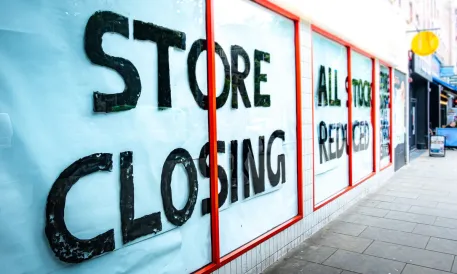The UK retail industry is facing a major shake-up in February 2025, with several well-known stores announcing closures. The shift in consumer behavior, high operational costs, and economic uncertainty have contributed to the decline of many brick-and-mortar retail outlets. This wave of closures is expected to impact thousands of workers and change the high street shopping landscape significantly.
Which Stores Are Closing?
A variety of popular retailers have announced permanent or temporary closures in response to the current economic challenges. Some of the biggest names affected include:
- WHSmith – Several locations shutting down due to declining foot traffic and increasing costs.
- Sainsbury’s – Multiple underperforming branches are closing as part of a restructuring plan.
- Iceland – Downsizing due to increased operational expenses and shifting consumer habits.
- The Entertainer – Closing select locations due to high rents and lower demand.
- Partridges – Facing financial struggles leading to the closure of some stores.
- Farmfoods – Streamlining operations to cut losses and focus on key locations.
- Homesense – Affected by reduced footfall and changing consumer priorities.
- Matthews Shoes – Succumbing to tough market conditions.
Why Are These Stores Closing?
1. Decline in Foot Traffic
With the rise of online shopping and e-commerce giants like Amazon, fewer people are visiting physical retail locations. Consumers prefer the convenience of ordering online and having products delivered to their doorstep.
2. High Operational Costs
Retailers are struggling with increased costs for rent, utilities, and wages. The economic situation has forced many businesses to make tough decisions about store closures to cut losses.
3. Changing Consumer Habits
More shoppers are shifting towards digital platforms and subscription-based services, reducing the need for traditional retail outlets. The pandemic also accelerated this trend, making it harder for brick-and-mortar stores to recover.
4. Economic Uncertainty & Inflation
With inflation and the cost-of-living crisis affecting consumer spending, many people are cutting back on non-essential purchases. Retailers that rely on discretionary spending are among the hardest hit.
5. Competitive Market
Retailers are facing intense competition from discount chains and online-only stores, making it difficult to maintain profitability. Many brands are restructuring to focus on online sales while closing physical stores.
Impact on Workers and Communities
The closures will inevitably lead to job losses, affecting thousands of employees across the UK. Communities that rely on these stores for everyday shopping will also be impacted, as many high streets face increasing vacancy rates and economic downturns.
Local business groups and government bodies are discussing potential measures to support affected workers and reinvigorate town centers, including:
- Retraining and employment programs to help displaced workers find new jobs.
- Government grants and business incentives to encourage new retail startups.
- Conversion of retail spaces into mixed-use developments, including residential areas and co-working spaces.
What’s Next for the UK Retail Industry?
Retail experts predict that the industry will continue to shift towards a hybrid shopping experience, blending online and in-store purchases. Some key trends to watch include:
- Increased investment in click-and-collect services.
- More brands focusing on personalized shopping experiences.
- Growth in small-format stores that focus on convenience and specialized products.
Conclusion
The wave of store closures in February 2025 marks another turning point in the UK retail industry. While these closures are a setback, they also highlight the changing dynamics of shopping behavior. Retailers that adapt to the digital era while maintaining some physical presence will likely emerge stronger in the future.
What do you think about the state of the UK’s retail industry? Share your thoughts in the comments!







